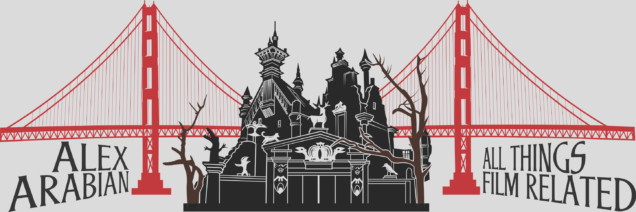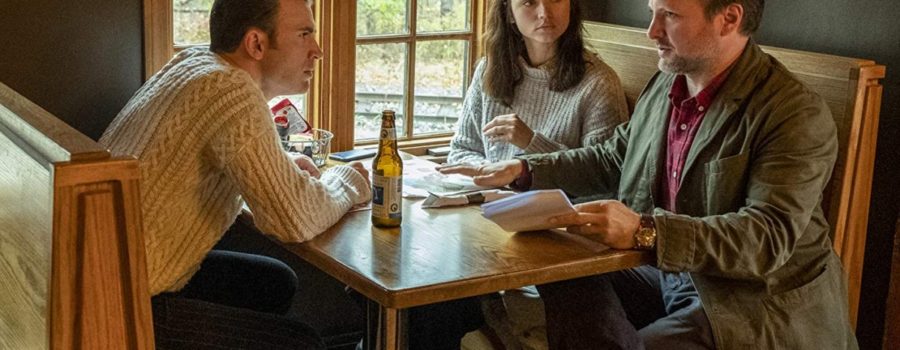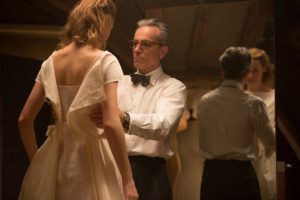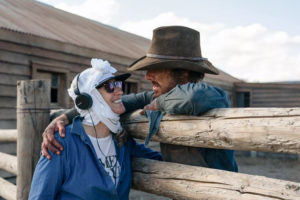[Published at Slant Magazine] Whether paying homage to the golden age of noir in a high school setting (Brick), exploring a world in which time travel has not only been invented, but commodified and outlawed (Looper), or crafting a more intimate narrative within a beloved franchise (Star Wars: The Last Jedi), Rian Johnson’s adoration of his cinematic predecessors is undeniable. Of the multitude of career feats for which the Silver Spring native is known, redefining genres remains, arguably, his most impressive.
And this year, the filmmaker has done it again with Knives Out, a modern, politically conscious take on the whodunnit. Though infused with the staples of this class-conscious genre, from the magnanimous detective, though one of the Southern-fried variety, to the coterie of potentially guilty parties, the film is also shot through with a distinctly modern sense of meta self-awareness and sociopolitical commentary.
Johnson recently sat down with me to discuss the film, and as we exchanged niceties, he pointed out my Girls on Tops shirt, noting he has “the Jamie Lee Curtis one.” Evidently, even directors geek out on their favorite actors. During our chat, we discussed the philosophical differences between film noir and the whodunnit, Johnson’s love for Agatha Christie, some of his other genre inspirations, the brilliance of Ana de Armas among Knives Out’s seasoned cast, Steven Sondheim, Skywalker Ranch, Star Wars, and more.
Brick is a neo-noir, and Knives Out is a whodunit. To you, what are the differences between the genres?
The key difference is almost a philosophical one between fiction film noir, which is [Dashiell] Hammett and [Raymond] Chandler and [James M.] Cain, and the whodunnit genre of Agatha Christie, Dorothy Sayers, John Dickson Carr. And the basic difference between the two of them is moral clarity, which is very interesting. The whodunit genre is a very morally unambiguous genre. There’s a crime. There’s moral chaos. The detective comes in, who’s usually the benevolent father, and he, through reason and order, sorts everything out and figures it out at the end and solves the crime and puts the universe back to sorts.
Whereas, obviously, with Chandler or Hammett, it’s the morally murky antihero, and nothing is put back right at the end of it. And everything is just as terrible as it always was. It’s fascinating, the comforting fairy-tale aspect of the whodunnit, but it’s also why I do describe the genre as comfort food for me. It’s something I keep coming back to over the years. And, goddamn, especially recently, the notion that reason and order could restore anything—the idea that goodness can bring anything back to being okay—would be nice [laughs].
No kidding. You spent 10 years developing Knives Out, and it subverts expectations until the very end. How many drafts did it take to make sure that the math and science of the script didn’t show?
That’s a good one. I [write] very structurally. Ten years ago, what I had was this very conceptual idea. It wasn’t like, “Oh, this person did it, and they did it this way with this weapon in the conservatory with the knife.” It was the very conceptual idea of taking a whodunnit, which is typically a genre that’s built on a big buildup to a surprise. Just, “Who done it?” That’s the name of the genre. And so you figure out who done it. “Oh my God, I’d never guess that,” or, “Oh, I guessed that.” And “Who cares?” That’s why Hitchcock hated whodunnits, famously, because drama built on surprise isn’t great drama. So, taking a whodunnit and putting the engine of a Hitchcock thriller in the middle of it and almost using that Hitchcock thriller as misdirection in a way so that we tell the audience very early, “Don’t worry about who done it. Don’t worry about solving this puzzle. That’s not what’s going to be entertaining for the next two hours. Here’s a person you care about. They’re threatened. Let’s all go on this ride together seeing if they can get out of this impossible situation.”
And the idea of doing that and yet still having all the pleasures of a whodunnit, basically, was the big-picture thing 10 years ago. And then I zoom in from there, and I figure out maybe it’s set in a big house with this family, and that means it’s this type of character who has this relation to this character, and this is how the detective functions in it. And I start putting the pieces together bit by bit, basically. And then the writing is where it really hits the road. Like you said, that’s when all the work goes into making the math feel like it isn’t math. I actually just sat down to write it last January. We had wrapped the movie by Christmas. I wrote it in like six months. And I still did a bunch of drafts. I did a lot of revisions to it. But when it was ready to come out, it came out very quickly, which I recently learned Christie wrote her books very quickly also. She was a big proponent of you think it, and you think it, and you think it. But then, especially with something this dense, there’s a value to not getting lost in the weeds. There’s a value to just pooping it out all at once. And I get it. It makes sense, especially if you’re trying to retain that very simple shape while it’s there.
This film is one of, if not, the funniest film that I’ve seen this year. Was it always your intention to have comedy be as much of an aspect as everything else?
I knew I wanted it to be funny. And I love all Agatha Christie adaptations. I’m a junkie. But I feel like a lot of the recent ones tend to go very serious in their tone. They tend to go dark. And that always loses me because the adaptations I grew up loving are Death on the Nile, Evil Under the Sun, the ones with Peter Ustinov as Poirot. And they all have this sense of self-aware fun, and they have all-star casts. It’s a big show that they’re putting on, but it never tips into parody. It’s not Clue. It’s not Murder by Death. It’s a real whodunnit with actual emotional stakes that rides that line of still being incredibly fun and being aware that it’s putting on a show.
That was the target for me, were those Ustinov-based adaptations. It was always something I wanted to really clearly communicate, both to the studio when we were starting and then the actors when we were casting. Every step of the way, it was, “We’re going to try and have a lot of fun with this. This, hopefully, is going to be very funny, but it’s absolutely essential that we all know that we’re not making a parody about whodunnits, that we’re making a whodunnit about something else.” And what’s on the screen, if that’s successful, it’s the actors. It takes really good actors to be able to walk that line and give performances that are this big and this on the verge of caricature, but then to never lose the grounding so much that they disconnect from planet Earth.
And that “something else” is a staple of the whodunnit genre: class. Many of the characters share unsavory opinions about immigration and take other offensive stances toward minorities while Marta is working for them. Much of their careless spitting out of Fox News soundbites signifies a cold detachment. And while his own family is so dysfunctional, the grandchild searches for another family to call his own, unfortunately finding one in the annals of internet white supremacy.
Annals or the anals, yeah, one of the two [laughs].
Exactly. Would you say that this film is just as much about upper-class American decay as it is about a murder mystery?
For me, what’s always fun about using genre is how one thing can engage the other. And it’s every movie. I can’t start making a movie until I know what it’s really about for me, and that thing it’s about is never the genre itself. It’s always got to be something else, obviously, that I care about or I’m angry about or thinking about. And it’s not trying to insert a message into a genre or trying to hide a message under a genre. For me, the “message” can’t be a message at all. It’s got to be something that every single scene in the movie engages with in some way. It’s got to be tied into the very shape and mechanics of the genre itself. And class is something that, like you mentioned, this genre is particularly good at.
Gosford Park is a brilliant example of using it to talk about class. What’s interesting to me is it’s usually done in the context of Britain, and just because of Christie. And we have this thing in America where we like to pretend that class doesn’t exist. We like to pretend we’re a classless society, so the idea of applying the genre to America in 2019 seemed like fertile soil. But if I’m doing my job right, it’s a fun whodunnit. And everything that’s fun and whodunnit-y about it is also serving the thing that this has on its mind.
Not to throw anyone under the bus—
Throw them.
With such an incredible cast of actors, who were you most excited about working with?
I’m not dodging it when I say every single one of them. I know I kind of am. But I’ll say this. For me, the person I’m most excited for audiences to see and discover in it is Ana [de Armas]. She’s great. Of a cast full of huge, amazing actors and movie stars, [she] is maybe the least known, and she plays the central part in the movie. And it’s a really tricky part because she has to bring so much to it for it to actually work. And for her to confidently step into the middle of a cast like this and carry the movie to the extent that she does, she’s absolutely extraordinary.
Yeah. She was amazing in it.
Isn’t she great? And she’s been working forever. She did Spanish TV. She was in Blade Runner 2049 and a couple other American films, but I have a feeling you’re going to see a lot more of her over the next couple of years. My casting director, Mary Vernieu, brought her to my attention. I’d seen her in Blade Runner 2049, but I wasn’t really familiar with her work. She’s really something special. And she’s playing Marilyn Monroe in Andrew Dominik’s Blonde, which is crazy because she was camera testing for that while we were shooting. She would show me these video tests of her done up as Marilyn in the middle of shooting this with her as Marta. Like, de-glamorized Marta. And then she shows me, and I’m like, “Wow! Who are you?”

I’m looking forward to that one. The Assassination of Jesse James was—
A fucking masterpiece. Incredible. He’s an amazing director. So, so good.
It was interesting that you had the cast spend time in the film’s gothic mansion for three weeks ahead of shooting in order to allow for “family bonding.” Do you have a fun story to share from the set?
There was one day where Frank Oz did a cameo, so he was on set. And it was really fun because everyone would just hang out in this little basement rec room down in the basement of this house. It felt like summer camp for movie stars. It was crazy. But the day Frank was on set, it was amazing seeing all these movie stars just gathered at his feet. Everybody was just in awe of him, and rightly so, trying to get stories about him doing Miss Piggy and Yoda. But Frank is a fantastic director: Dirty Rotten Scoundrels, What About Bob?, The Little Shop of Horrors, which is one the all-time great movie musicals. He’s an extraordinary, multi-talented guy. So that was an amazing day, just seeing all these actors bow down to the mighty Frank.
Are you planning any Agatha Christie-esque Knives Out sequels?
I would be thrilled, man. Yeah. We’ll see how this one does. You never know with an original thing. But god, I hope it does well because it would be so much fun to get together with Daniel [Craig] every few years and make a new one. You can tell how much fun he’s having doing this [laughs]. And it’s such a malleable genre. You can do so many different things with it, so that would be really, really fun.
Speaking of fun, the Sondheim song that Craig sings in the car was such a great scene [laughs]. You both must have had a blast shooting that.
Yes! Oh my god! “Losing My Mind.” That scene was so good.
Does Craig play F on the piano throughout the film? Because “Losing My Mind” is in the key of E.
Oh! Is that the song that’s going in his head while he’s doing it? I forget what note it is. Next time I’m watching, I’m going to look, and I’m sure we can see which one he’s hitting. Shit, where were you on set? I can claim it. I will retroactively claim it. I could have actually had it be a slightly different note he’s chiming, playing the tune of “Losing My Mind.” Shit! I have to go back and redo it [laughs].
Shall we do some last-minute reshoots?
Yeah. Let’s get back in, man. We’re going up to Skywalker this afternoon. We can do a remix. We’ll get [Daniel] up there.
Speaking of Skywalker, you’re still planning on writing and directing a Star Wars trilogy, correct?
I’m still talking to Lucasfilm about it. They haven’t announced anything. They’re still figuring out what they’re doing.
You confronted Rey’s parental lineage in The Last Jedi, seemingly putting an end to the many fan theories, while subverting expectations for a portion of toxic fans. Has any further information on Rey’s family been shared with you since The Rise of Skywalker began production, and are you concerned what J.J. Abrams might do with Rey’s lineage?
I’m not concerned at all. I’m 0% concerned. I’m thrilled. I cannot wait to see Episode IX. I’ll preface this by saying I’m going to be going in clean. I’ve tried to stay out of the process as much as possible. I can just be a Star Wars fan and sit down and watch. And I want to be thrilled. I want to be surprised. I cannot wait to see what happens next. I’ve never really understood the attitude that some people come at the movies with of, “I have my very specific list of things I want to see, and if those don’t happen, I’m going to be upset.” That I don’t get. And just in terms of movies, in general, I don’t know why you would sit down to watch a movie and feel like that and want that. So, to me, it’s all storytelling, man, and so push the story forward, have it make emotional sense, and take me someplace I’ve never been. And I know J.J.’s going to do that. I can’t wait.








Leave a Reply
Your email is safe with us.